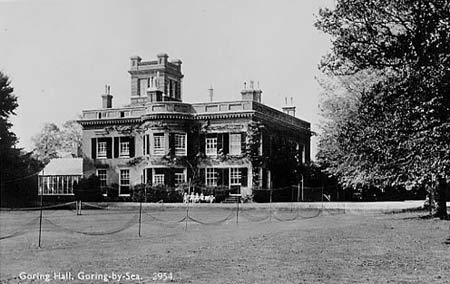|
Monkhouse, whose story begins when he was a young 11 year-old boy.
'Just before the end of August 1939, my father stood up after Sunday lunch in our Beckenham home and announced that Hitler was sure to launch a massive surprise blitzkrieg upon London. He told us that he had bought a small house in West Worthing and that we were to move down there at once.
During the phoney war, that strangely peaceful period that followed the declaration of hostilities, I wondered if my father had been right to move us to the south coast. His predicted London Blitz wasn't happening, but every Worthing lamppost had placards exhorting residents to 'Stay Put'. The inference drawn was of invasion, and people were beginning to talk of extended holidays in Scotland and Eire.
One sunny morning in the following July, the distant pulsing growl of a plane engine made me look up at the sky to see a (German)Dornier 17 bomber flying very low and slowly over the rooftops, heading towards me.
The German plane passed directly over my head leaving a sooty trial. I could see the outline of a pilot's helmet as the aircraft swept away and a few moments later I smelt the oily odour of the smoke.
Two Spitfires came banking down from over the sea, engines grinding out a lighter note than the bomber. Immediately behind them, higher and in a V formation three Me-109s appeared like shepherds searching for their lost sheep. All the planes vanished inland and then, lower than ever and with its right engine flickering with little rosy petals of flame, the Dornier returned, heading for the sea.
One of the crew of four was pressed against a glass panel in the bulging forward section and I saw something fall as the pencil-shaped body of the fuselage glided away.
The RAF and German fighter planes were scribbling angry patterns in the blue high above and the angry chatter of their guns was surprisingly loud.
By this time, I was on my bike, cycling as fast as I could round the little lanes to see if I could find what had fallen from the Luftwaffe bomber.
Lots of people were out of their houses, shielding their eyes as they gazed upwards. My gaze was downwards. When I saw it lying in the gravel at edge of a private drive, I recognised it at once. It was a military mess tin, a grey metal box with a lid, intended to carry rations.
It was stamped with the outline of a swastika on one side and a spread eagle on the other. Inside it were three photographs, a coloured stone and a letter in German on yellow paper. The photos showed a handsome young man with close-cropped hair and wearing an NCO's uniform jacket, a pretty young woman posing coyly beside a farm pump, and a fat baby on a rug in a bushy garden.
I later heard that the Dornier had hit the sea and broken up about two miles offshore. There had been no survivors. Alone in my room at night I pored over the letter. It seemed to be addressed to someone called Fremde, which I took to be the name of the girl in the photo. I could picture the desperate airman, resigned to a fatal crash, hastily penning his last message of love to his young wife in Germany and then casting it from his dying craft.'
Monkhouse could't read German but his teacher at the nearby Goring Hall School, Mr Hatfield, could. To avoid any possible confiscation of the letter the youngster struggled to copy it, giving the freshly written one to his teacher. | 
Goring Hall School near Worthing, where young Bob Monkhouse was schooled during the war at his father's expense.
| On returning home after school, the young lad was met, not greeted, by his mother, who terribly enraged, and by the headmaster, Mr. Green. Monkhouse was quizzed about how and where he found the note, and was subsequently sent to bed without his supper.
It transpired that the letter was encouraging sabotage of the British war effort. The photographs were typical examples of healthy strong and friendly German people.
The stone, however, was a valuable piece of red jasper dating back to Roman times, intended to fund the cost of derailing trains and starting fires.
Monkhouse recalled, 'I was given to understand that the gem had been surrendered to the Crown. I didn't much care. All I knew was I had a month of extra prep, early bedtime and not going to the Worthing Odeon. Bloody Jerries!'
| |


